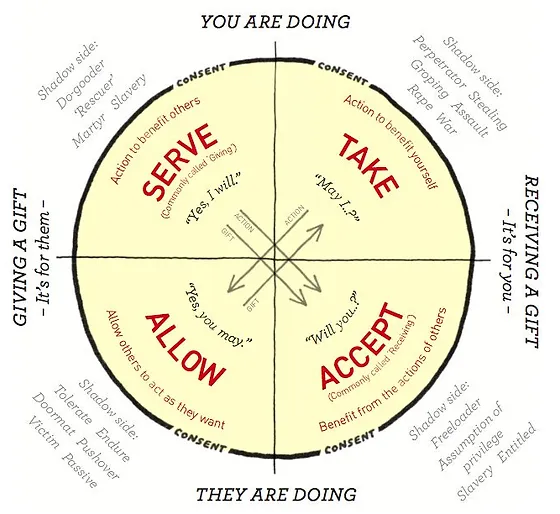6 Free Exercises to Increase Your Libido!

In my practice, I help people discover their sexuality, also by treating their levels of libido. Libido treatment with sex therapy is very effective and can help you in other areas of life (read more about sex therapy at our clinic). And relationship therapy is a wonderful addition (read more about couples therapy). Very common problems are low libido, hyperactive libido, and mismatched libido in couples. Very often, I see that one or both people in a couple have lower libido and want to be more sexual together; that’s where I can help. I provide people with guidance on a good sexual routine, habits, and sexual solutions. I give people homework that involves touch and intimacy exercises. But if I see that a couple has other issues, I would address trust and communication issues first. My clients are gaining a better sense of their sexual self and are able to better express their wants and desires. They find more fulfillment in sex, intimacy, and deeper connection within themselves and their partners.
Both couples and individuals can experience a decline in libido levels which can cause decreased desire and arousal during sexual encounters. Our internalised sexual inner system can be affected by various external factors in our life such as stress, poor health, depression, or difficult situations.
You are not alone!
There are plenty of solutions and exercises that you can implement to get your sex drive back. Don’t give up on your sex life, it can give you so much fun, pleasure, and enjoyment!
Exercises presented here work best when paired with sexual therapy online or in-person.
Learn more about how sex therapy works and how it can support your journey toward healing
Ask a sexologist online for guidance and an appointment.
A few words about desire

Sex Will Not Fix Other Issues
You’ll have more sex (and better sex) if you build these 5 skills:
1. Comforting yourself when frustrated
2. Giving your mate the benefit of the doubt
3. When hurt redefine the idea of your partner from uncaring to uninformed
4. Imagining yourself stating something before you actually say it
5. Striving to understand your partner before you strive to be understood
Wheel of Consent
Betty Martin and Robyn Dalzen in the book “Art of Giving and Receiving” are putting forward an idea that there is a difference between ALLOWING (…others to act as they please) and ACCEPTING (…a gift that we want and will benefit from). Even though an action is done to us we can allow it for the benefit of the other person or accept a gift in the form of action from a partner. They can sometimes go hand in hand so both us and our partner will be benefitting. We need to remember to make sure which one are we experiencing and also if our partner is allowing or accepting.
It can be confusing as to when are we giving or receiving a gift. For example, if your partner is performing oral sex and you do not enjoy it but they take pleasure in performing it you may allow them to perform it so that they can have that ‘gift’ but you will not be ‘accepting a gift’ yourself even though the action is meant to pleasure you. You need to communicate that and come up with a solution so that your partner doesn’t get the wrong idea. Others’ pleasure doesn’t always equal your own pleasure, but we can also gain from seeing our partner happy as well.
We can GIVE by doing something to someone but also by letting them do something to us. And we can RECEIVE by accepting desired action being done to us or by doing something that we want to do to someone else. So GIVING touch can be to my benefit or my partner’s (can be both at the same time) and RECEIVING touch can be to my benefit or my partner’s (can be both at the same time)
The next few exercises will be based on this idea and will teach you proper communication. You can try using those 2 terms as well: “I allow you” or “I want to” (do it or you to do it = “I accept your gift”).
If emotional trauma has impacted your desire, try our 14 thoughtful exercises for trauma survivors, ideally with therapeutic support.

Caressing Hands Exercise
A simple exercise to start with. It will give you an idea of what intimacy and communication should look like. How is pleasing yourself different than pleasing your partner?
Partner A gives partner B a hand massage. Partner A is to massage one of the hands of partner B for 2 minutes just for their own curiosity and exploration. Partner B is to just give in to the massage and comment only if there is any pain/tickling. Partner A can explore their partner’s hand look at it, feel it, smell it, etc.
In the second part of the exercise partner, A is to massage the other hand of partner B. This time it is about partner B’s pleasure. Partner A should look for cues from partner B. Partner B can comment on the touch or just let their partner know what works through their facial expressions or soft moans.
After you finish the exercise stay connected. You can have a chat about the exercise and what it felt like for you. What types of emotions came up? What ideas did this exercise bring to you?
SIMMERING
Time required: few minutes every day
Try to remind yourself of this exercise every day. It works best when you have an erotic thought or even a reminder pops up in your head. Hold on to this though and develop it for a couple or a few more minutes. Think about what type of sexual scenario turns you on. Create your personalised fantasy which can include your partner, person on TV, or anybody else. Create your own X-rated mental video.
Including your partner in this exercise is a great idea. Let them know that you will be performing this exercise. Perhaps they will start doing it too.
Just before you come back home from work ‘replay’ your mental video and give your partner a quick call to let them know that you will be ready for them when you get home. This can spice up your sex life.
CONDITIONS CHECK
Think back to the time when you had a great sexual experience and try to compare it with a sexual experience that was not very successful. Create 2 lists. One of them with conditions, feelings, and thoughts in which you have had a good time and the other one with the same items but present during the unsuccessful sexual situation.
What was your mood like?
What was the situation?
What was your partner’s mood like?
Where did you engage in sex?
What was your and your partner’s physical condition?
When did you have sex?
What was on your mind?
Were there any other events happening in your or your partner’s life that could have been affecting those situations?
What was the mental fantasy at the time? What were you thinking about?
Put this list away for a few days. Come back to it and review the list. Next to every item write down what you would incorporate or try to get rid of for the future. For example, if you realise that during the ‘good time’ it happened in the morning and you were rested, perhaps it will be a good idea to try to have sex in the mornings when you feel physically better. Go through every point in this manner and evaluate if and how you should implement those ideas into your daily life. Be specific! Vague ideas are hard to implement.

HAVING SEX IN THE ABSENCE OF STRONG DESIRE
I am absolutely not advocating having sex when it would make you feel bad about yourself, or being coerced to do so! However, even attempting to start having sex or caressing your partner can turn out to be a great idea and the encounter can end up being amazing. Referring back to the two types of desire – spontaneous and responsive: even if we do not have enough drive to initiate sex, it doesn’t mean that when we start doing something sexual with our partner we won’t start feeling responsive desire. Many couples find that in the long run, their desire is increasing through more practice and comfort during initiation.
SET THE MOOD AND MAKE SEX IMPORTANT
Many couples after years of being in a relationship put sex at the back of the list of things to do. Perhaps a certain time in their life is very busy, a new baby has just been born or one of the partners got a promotion, etc. Of course, these things will happen, but often ‘temporarily put off sex’ turn into ‘permanently put off sex’.
If this seems like a problem you are having, this is an exercise for you. Start treating sex and intimacy as serious matters in your life which in the long run will keep your relationship together. Make time for it. If you have a busy schedule, sit down with your partner and figure out when should be your ‘sexy’ time. Have a couple of meetings to talk about your relationship, feelings, and intimacy.
When it comes to setting the mood, make sure the environment is favorable:
- Don’t do it too late in the evening when you are tired
- Make sure the temperature in the room is right
- Make sure that the lights are set in the way you both like it
- Light some candles or arrange the room in a way that you like it
- Make sure that you will not be disturbed or hurried
Sensate Focused Therapy
This is a relaxing exercise that builds comfort in communicating with your partner during the initiation and sex and also focuses your attention on what stimulates you. Before you begin talk about your erogenous zones. Point exactly where they are, a few centimeters on the leg or arm can make a big difference, you do not want to feel uncomfortable during the session. The point is to figure out your boundaries and communicate them to your partner. Also, mark each erogenous zone on a scale from lowest to highest before starting the second part of the exercise
PART 1:
Start with non-genital touch. Let your partner touch you but nowhere near your genital or erogenous areas such as breasts. Comment on what types of touch work for you best. You can politely tell your partner to change the type, pace, and strength of touch. Let them also ask you questions about what is more pleasurable. Communication is the key! Do this for 5-10 min.
PART 2:
This part of the exercise involves erogenous areas but does not involve the inner part of the vulva. Let your partner continue to touch you and you can keep commenting on your sensations and what is most arousing for you. Start with the least erogenous zone and continue to go up the scale.
PART 3:
Add genital touch. Let your partner experiment with ways in which they touch you on your genitals. Keep talking, ask questions, and have fun with it!
PART 4:
If you will be ready and happy to try light penetration your partner can try to insert one of their fingers inside your vagina. Remember that you are completely in control of the situation and you can say stop at any point. If the insertion is successful you can proceed with exploration. Your partner can experiment with positions of the finger, start to thrust, or even search for your G and A spots! Keep talking and commenting on what works best.
Explore other articles, books and online courses. Or work with me, explore my services on the Home Page. Book your FREE 15min phone consult.